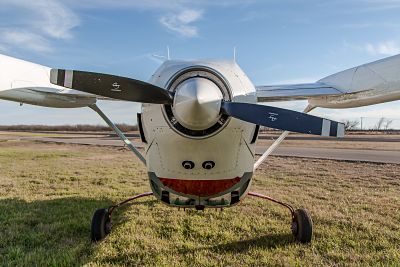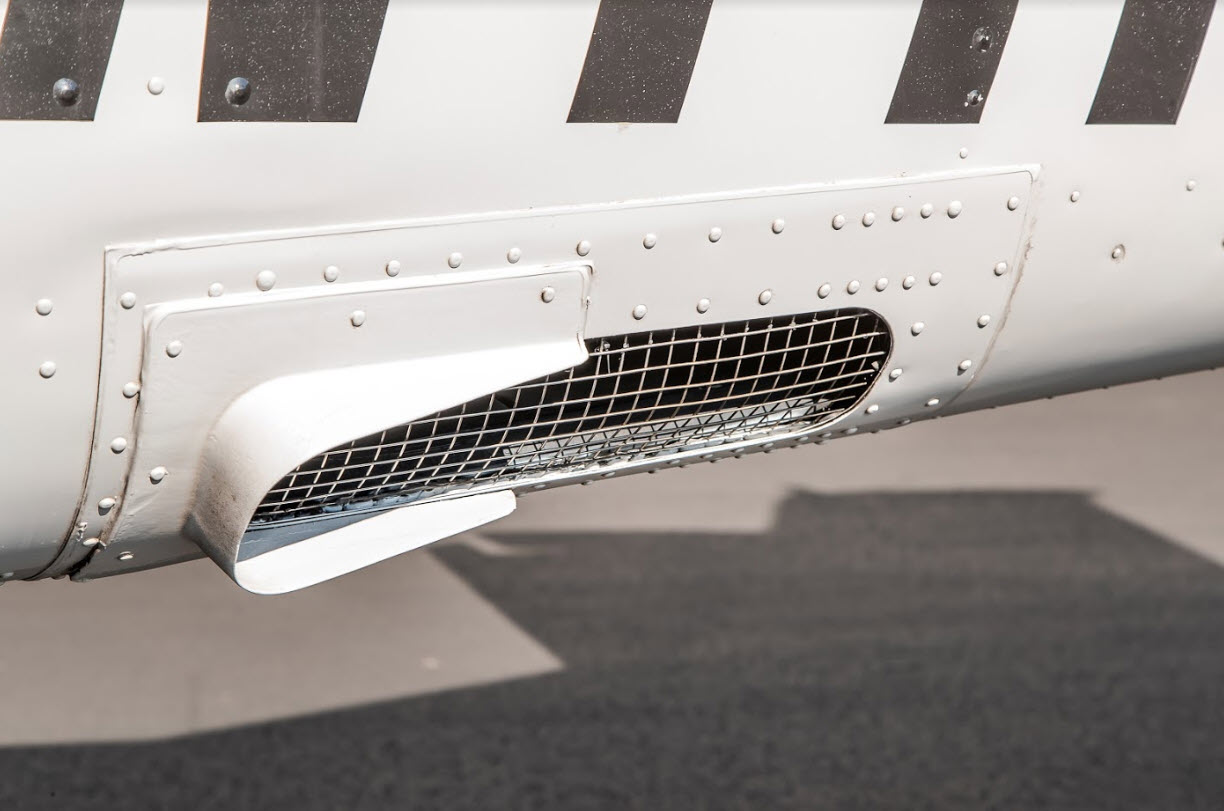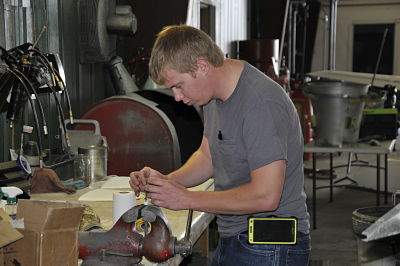By Jim Gibertoni
Over my 40 years of Alaskan flying, I have either hired or been involved with numerous aircraft mechanics. Most of them have been pretty good people, but not all have been good mechanics.
I once owned a Stinson 108-3, which I bought from an aircraft mechanic. Twice that plane almost killed me because of poor work. I paid my own mechanic dearly to properly repair it.
For the 16 years I have owned my Cessna U206D, all of the mechanics I’ve had work on it were good. Some were phenomenally great.
Qualities to look for
The No. 1 thing I look for is integrity. I don’t put much credence in rumors! References are better. I try to judge people by actions and performance (or lack thereof). People who make excuses in their first sentence, I shy away from. Integrity, people!
I know a person who spends the least amount possible on annuals and uses the cheapest guy in town. That plane is constantly breaking down. How much per hour your mechanic charges is not really relevant. Let’s say you need a repair job replacing a certain part. A&P No. 1 does it in six hours at $100 per hour for a total of $600. A&P No. 2 does it in four hours at $150 per hour, so $600 total. What I look for is who gives me the best dollar spent to quality return ratio. There’s no free lunch here.
Tenacity is another fine quality to look for. I had a problem years ago in my 206. The prop would surge on occasion on takeoff. After sending the prop down to the prop shop and replacing the governor twice, we were at a standstill until my mechanic did deeper homework and investigation. It ended up being a bushing inside the crank just back from the prop flange. There’s a dimension associated with that bushing and it was not within spec. The shop shipped in another one — boom, done. No one we could find up here had ever heard of such an issue.
Importance of a good mechanic
Trying to retrieve an aircraft that was forced to land by a mechanical issue and left out at a village in Alaska (hundreds of miles away, deep winter) costs a small fortune, especially in the Alaskan winter. It’s like playing poker when the minimum raise is $100; you have to learn poker fast. It’s better to be proactive during the inspection and replace parts before they actually need replacing.
For example, your wheel bearings are 20 years old and have 7,000 hours on them. Ask yourself, should I maybe replace both of these now while I am inside a heated hangar in town with a real mechanic here? How much equity do I have left in those bearings today? Been there, done that, gobs of money.
I cannot have, nor can I afford to fly, an aircraft in Alaska that was last worked on by someone I do not trust — period (especially given the places I go and the weather). You’ve got to have a mutual trust — develop a relationship. However, steer clear of the alpha dog mechanic. Consider going non-local to another FBO, it may be worth your while.
Communication
The mechanic is walking a tight rope, too. On one hand, he or she is trying to get your business while on the other hand you’re trying to get a scope of work done without breaking your bank and while keeping the FAA happy. Tough position.
You and your mechanic need to be able to properly communicate. That’s paramount. Both of you need to be picking up what the other is putting down. Both of you need to be good listeners. Be advised this is not my strong point. However, in this relationship neither is subordinate to the other.
Do your part
My 206 has a Continental IO-520F. Usually my engine runs really smooth because of GAMI jets and I have a JP Instruments EDM 930. I can see all six EGTs and CHTs at a glance. During cruise one day I picked up some roughness, which was very unusual. At 5,000 feet, I flew over a sleepy village on the road system. I performed an inflight mag check. After failing the left mag (pilot’s side) the No. 3 cylinder EGT went to zero. Both mags on, No. 3 EGT went back to almost normal. When I landed, I requested the mechanic remove and replace just the lower No. 3 spark plug. Problem solved.
You just cannot burst through the hangar door and say, “Something’s wrong!” Document the alleged problem before you talk to your mechanic. Help them resolve your issue.
That’s how you and your mechanic can work together to save time and money. Again, communication. My EDM 930 has paid for itself many times over. Consider that! Be a team player: Document anomalies while operating the aircraft and take pictures and videos of the panel while flying (GoPro cameras are great).
A&P responsibilities
Your mechanic needs to keep track of all the points of concern on an airplane. For example, it has been my experience that vacuum pumps go south about every 750 to 1,000 hours. They cost about $750 to $1,000, or about a buck per hour. So, at about 850 hours you have about $150 of equity left in that part. OK, maybe rack up another 100 hours locally; however, before I go to western Alaska, I toss it. I try to be proactive and my direction to my A&P is the same. I have lost the vacuum pump before in IMC, not cool. Training doesn’t help in that case.
Recently I have read and heard stories of failures and accidents caused by aircraft returned to service with a problem caused by the mechanic — poor reassembly. These are accidents/failures that would not have happened if the inspection did not happen. It happened to me three years ago when a wire was removed off the No. 2 VOR head when the altimeter was removed and replaced for the biannual IFR testing of the altimeter. I caught it on the VOR check immediately.
You need to have a conversation on who’s doing the quality control, and who’s doing the quality assurance.
Paperwork
I have never been a fan of leaving my logbooks for an extended period at the mechanic’s hangar. If they’re not at home in my fireproof vault, I do not have control of them. I like stick-on pages that I can add to my book after I get home. Bring the issue up during the negotiation before you agree to use that mechanic. Your logs need to be kept in a very neat, chronological order listing all 337 forms, STCs, inspections, repaired damage, etc., so the FAA, NTSB, and mechanic can find what they’re looking for easily. The owner doesn’t need to pay the mechanic to be his or her secretary.
Money matters
You cannot expect your mechanic to be productive and happy after creating a losing environment for them. Don’t go there. Respect their right to make profit.
If you want to save money, go to Safeway, Costco, or Walmart. Be fair. Nor can the mechanic expect to be paid again to fix their mistake. Be mindful that pilots and mechanics both are human and will make mistakes.
Final thoughts
Ask yourself a question now. When that mechanic has finished with your aircraft and signed it for return to service, would you trust their work to put your spouse and kids in that plane for a ride?
Jim Gibertoni has been a pilot in Alaska for more than 40 years. He has flown as a search and rescue pilot for 23 years and currently owns a Cessna U206G, which he uses to give the occasional ride to Alaska newbies.






